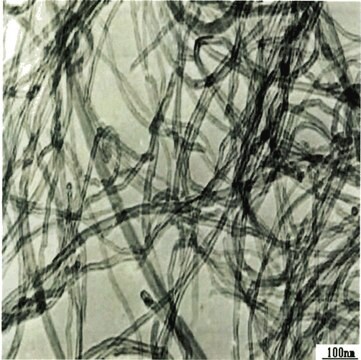755133
Carbon nanotube, multi-walled
thin, <5% Metal Oxide(TGA)
Sinónimos:
NC-3100, MWCNT, MWNT, Multiwall carbon nanotube
About This Item
Productos recomendados
formulario
powder
diám. prom. × L
9.5 nm × 1.5 μm , TEM
impurezas
<5% Metal Oxide (TGA)
mp
3652-3697 °C (lit.)
densidad
~2.1 g/mL at 25 °C (lit.)
¿Está buscando productos similares? Visita Guía de comparación de productos
Descripción general
Aplicación
Electronics
Sensors
Composites
Energy Storage
Study of Life Science system
Nota de preparación
Información legal
Código de clase de almacenamiento
11 - Combustible Solids
Clase de riesgo para el agua (WGK)
WGK 3
Punto de inflamabilidad (°F)
Not applicable
Punto de inflamabilidad (°C)
Not applicable
Elija entre una de las versiones más recientes:
¿Ya tiene este producto?
Encuentre la documentación para los productos que ha comprado recientemente en la Biblioteca de documentos.
Los clientes también vieron
Artículos
3D printing is a type of additive manufacturing that can be used to rapidly fabricate components with highly customizable geometries.
Boron nitride nanotubes (BNNT) are close structural analogs of carbon nanotubes (CNT), which are high aspect ratio nanotubular material, where carbon atoms are alternately substituted by nitrogen and boron atoms.
Carbon nanotubes (CNTs) have received much attention since their discovery in 1991 by Sumio lijima1 due to their excellent mechanical, electrical, and optical properties.
A nanocomposite is typically defined as a mixture between a host material (e.g., polymer matrix) and nanofillers with at least one dimension of less than 100 nm.
Nuestro equipo de científicos tiene experiencia en todas las áreas de investigación: Ciencias de la vida, Ciencia de los materiales, Síntesis química, Cromatografía, Analítica y muchas otras.
Póngase en contacto con el Servicio técnico





